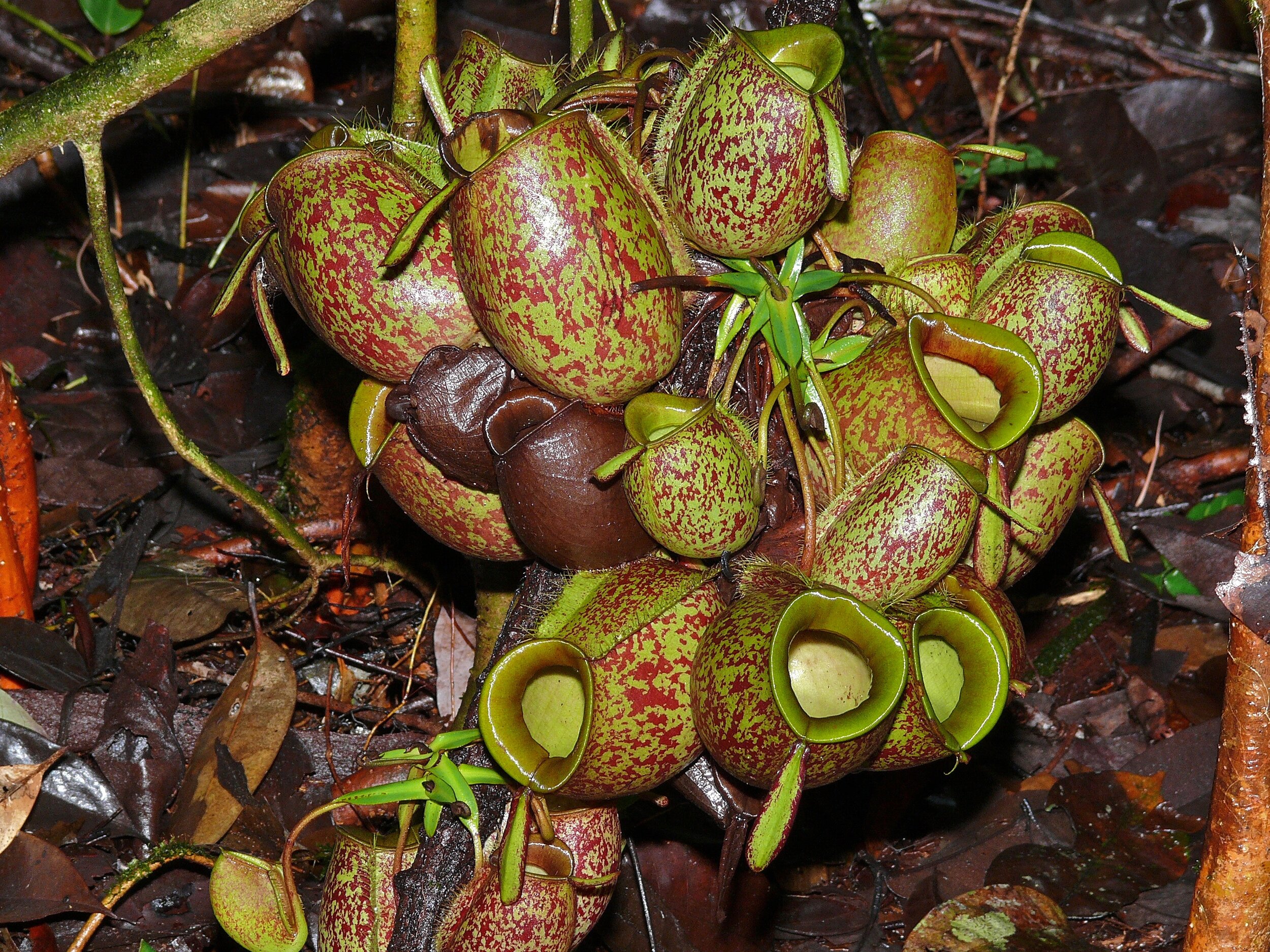Photo by Chris Moody licensed under CC BY-NC 2.0
The thought of a carnivorous plant trapping and digesting a vertebrate may seem more like fiction than reality. Though rumors have circulated over the years that some pitcher plants have a taste for animals larger than an insect, this has been hard to prove as evidence has been notoriously lacking. That is not to say it does not happen from time to time. Small mammals have indeed been found in the pitchers of some of the larger tropical pitcher plants in the genus Nepenthes. Still, these seem more incidental than regular. However, recent observations from Canada suggest that vertebrates may actually make up a bigger part of the menu of some pitcher plants than we previously thought at least under certain circumstances.
The observations were made in Algonquin Provincial Park, Ontario. The carnivore responsible is North America’s most abundant pitcher plant - the purple pitcher plant (Sarracenia purpurea). In late summer of 2017, researchers discovered that some pitchers contained recently metamorphosed salamanders. Some of the salamanders were alive but a few others were dead and undergoing digestion. This was very exciting because despite plenty of study, there has been almost no substantiated evidence of vertebrate prey capture in the purple pitcher plant.
Subsequent surveys were done to figure out if the purple pitcher plants were indeed capturing salamanders on a regular basis or if the salamanders were one-off events. It turns out that, at least for the pitcher plants growing in this bog, salamanders may make up a considerable proportion of their prey! Researchers found that recently metamorphosed spotted salamanders were present in nearly 20% of the pitcher plants they surveyed!
Not all of the salamanders they found were dead. Some were found in a relatively lively state, retreating down into the bottom of the pitcher whenever they were disturbed. Some of the larger dead specimens showed signs of putrefaction, which is probably because they were simply too large to be properly digested. Still, many of the dead salamanders showed signs of digestion, which suggests that the plants are in fact benefiting from salamander capture. In fact, it has been estimated that a single salamander could contribute as much nitrogen to the pitcher plant as the entire contents of three pitchers combined.
Taken together, the team found enough evidence to suggest that salamanders not only make up a portion of the pitcher plants’ diet in this bog, but also that pitcher plants are a significant source of mortality for young salamanders in this system. How the salamanders are caught is up for some debate. It could be that the salamanders are looking for a safe, wet place to hide, however, the complexity of the bog habitat means that there is no shortage of safe places for a young salamander to hide that won’t end in death.
It could also be that salamanders are attracted to all of the invertebrates that these plants capture or that salamanders are accidental victims, having fallen into the trap randomly as they explore their habitat. However, some pitchers not only contained more than one salamander, the plants position and stature within the bog means that most salamanders would have had to actively climb up and into the pitcher in order to end up inside. It very well may not be random chance after all. Certainly this will require more tests to say for sure.
What we can say for now is that within the confines of this Algonquin bog, salamanders are being trapped and digested by the purple pitcher plant. How much of this is unique to the circumstances of this particular bog and how much of this is something going on in other areas within the range of the purple pitcher plant is a subject for future research. It is possible that vertebrate prey may be more common among carnivorous plants than we ever thought!


